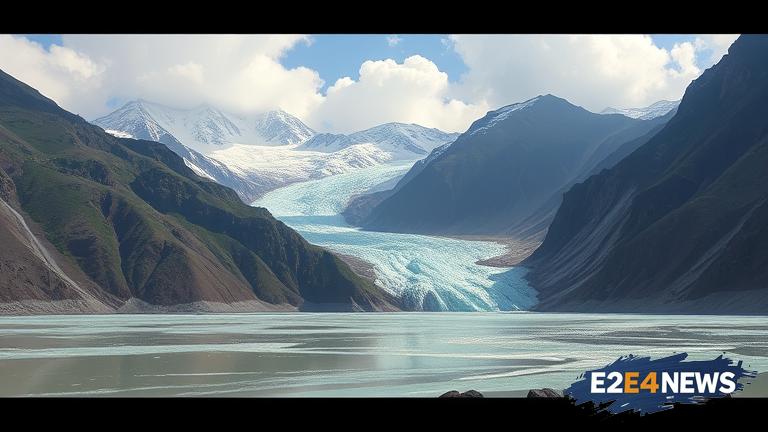A recent flood in Nepal has raised concerns about the potential dangers of glacial lake outbursts, which can occur without any rainfall. The flood, which was caused by the bursting of a glacial lake, has highlighted the need for urgent attention to be paid to this growing threat. Glacial lakes are formed when glaciers melt and create lakes, which can then burst and cause catastrophic floods. Nepal is home to many glacial lakes, and the country’s rugged terrain and changing climate make it particularly vulnerable to this type of disaster. The flood has caused widespread damage and disruption, with many homes and buildings destroyed or damaged. The Nepalese government has been criticized for its slow response to the disaster, and there are concerns that the country is not doing enough to prepare for and mitigate the effects of glacial lake outbursts. The impact of climate change on Nepal’s glaciers is a major factor in the increasing risk of glacial lake outbursts. As the climate warms, glaciers are melting at an alarming rate, creating new lakes and increasing the risk of existing ones bursting. The Nepalese government has been working to identify and monitor glacial lakes, but more needs to be done to address this growing threat. The international community has also been called upon to provide support and assistance to Nepal as it works to mitigate the effects of glacial lake outbursts. The flood has also highlighted the need for greater awareness and education about the risks of glacial lake outbursts, particularly in rural areas where the risk is highest. In addition to the human cost, the flood has also had a significant impact on the local economy, with many businesses and industries affected. The Nepalese government has announced plans to provide support and compensation to those affected by the flood, but it is unclear how effective these measures will be. The flood has also raised concerns about the long-term sustainability of Nepal’s infrastructure, particularly in areas prone to glacial lake outbursts. Furthermore, the flood has highlighted the need for a more coordinated and effective response to disasters, including better communication and cooperation between different government agencies and emergency services. Overall, the flood in Nepal has highlighted the urgent need for action to be taken to address the growing threat of glacial lake outbursts, and for greater awareness and education about the risks and consequences of this type of disaster.
